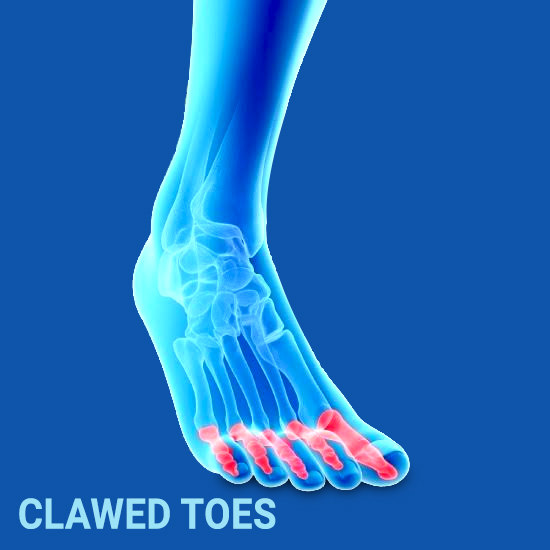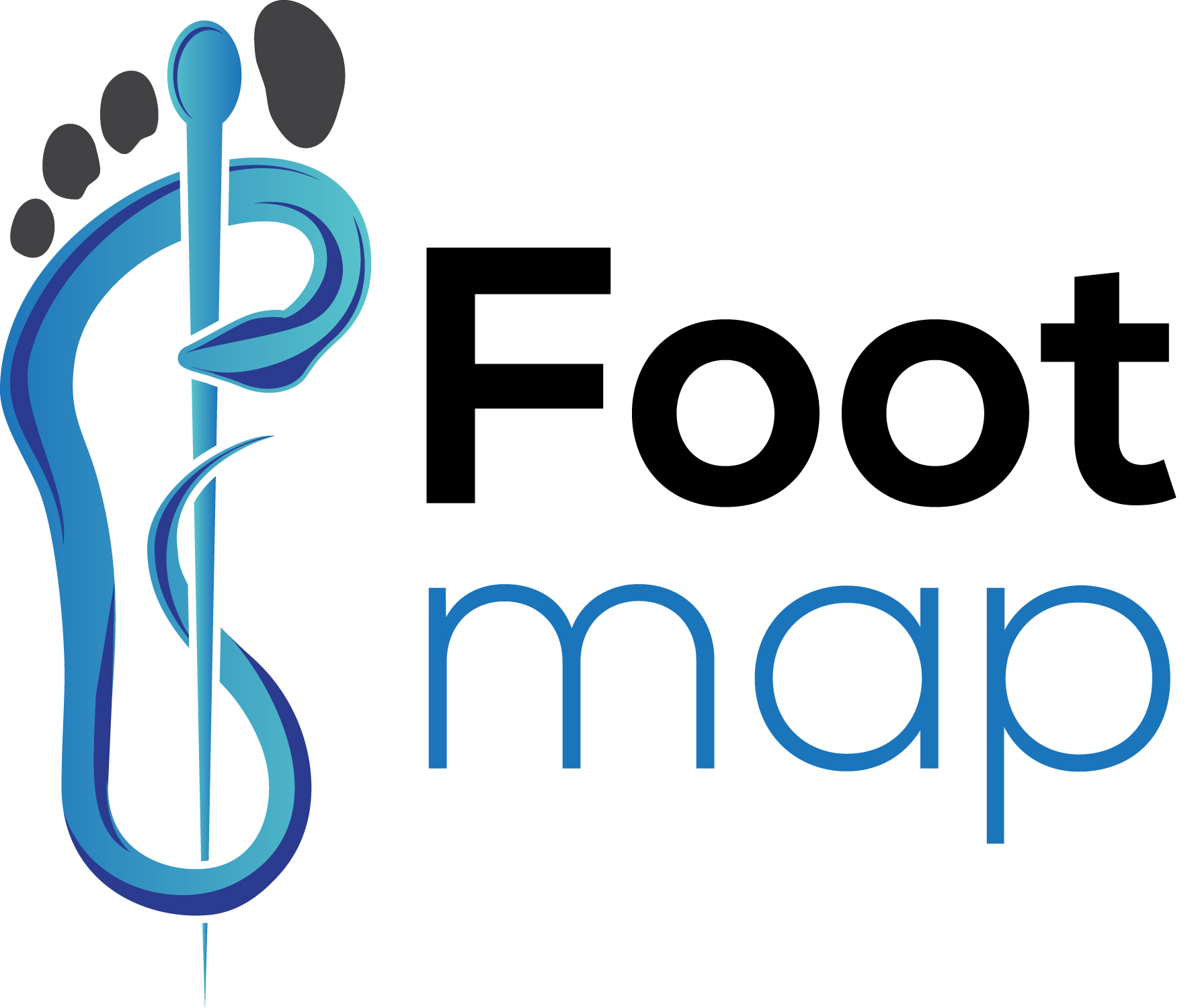Clawed Toes
 Claw toe is a foot deformity due to nerve damage and muscle weakness as a result of underlying medical conditions, congenital, foot structure and shape such as high arches. Claw toe is a deformity at the metatarsal phalangeal joint. The condition can cause pressure and pain and usually occurs in the four smaller toes. Claw toe if left untreated, gets worse and may become a permanent deformity over time. There are two types of Claw Toe – flexible and rigid.
Claw toe is a foot deformity due to nerve damage and muscle weakness as a result of underlying medical conditions, congenital, foot structure and shape such as high arches. Claw toe is a deformity at the metatarsal phalangeal joint. The condition can cause pressure and pain and usually occurs in the four smaller toes. Claw toe if left untreated, gets worse and may become a permanent deformity over time. There are two types of Claw Toe – flexible and rigid.
- In a flexible claw toe, the joint can move. Straightening the Claw Toe is possible.
- In a rigid claw toe movement is limited and can be extremely painful.
Causes
- Muscle imbalance
- Arthritis
- Diabetes
- Alcoholism
- Ill-fitting shoes
- Charcot-Marie-Tooth Disease
- Stroke
- Spinal cord tumours
- Polio
- Hereditary
- Trauma and inflammation
Symptoms
- Toes are bent upwards – extension
- Toes are bent downwards – flexion
- Development of Corns either over the top of the toe or under the ball of the foot.
- Pain at the level of the unstable metatarsophalangealjoint
- development of corns and calluses.
- Restricted foot movement leading to extra stress at the ball-of-the-foot.
Diagnosis
The doctor may need specific tests to rule out neurological disorders that can weaken your foot muscles, creating imbalances that bend your toes.
Treatment
- The doctor may recommend splint or tape to hold the toes in position
- Use pad to relieve pressure on the ball of the foot and redistribute your weight
- Toe crests, hammer toe splints, gel toe shields, gel toe caps to prevent friction between the toe and the shoe and to provide comfort and lubrication.
- Will be advised to wear a shoe that is soft with lots of room for toe and to avoid tight shoes and high heels.
- Wearing arch support, shoe inserts, to cushion the toe
If non-surgical treatment approaches fail then the doctor may go for surgery for
- Tendon lengthening and rerouting.
- The doctor will choose to shorten the bones of the phalanx.
- The doctor may choose to temporarily Insert a steel pin to hold the correct position of the toe until healing occurs.
Prevention
Change the type of footwear. Get your foot analysed and find the proper-fitted shoe with a lot of room forthe toe.
